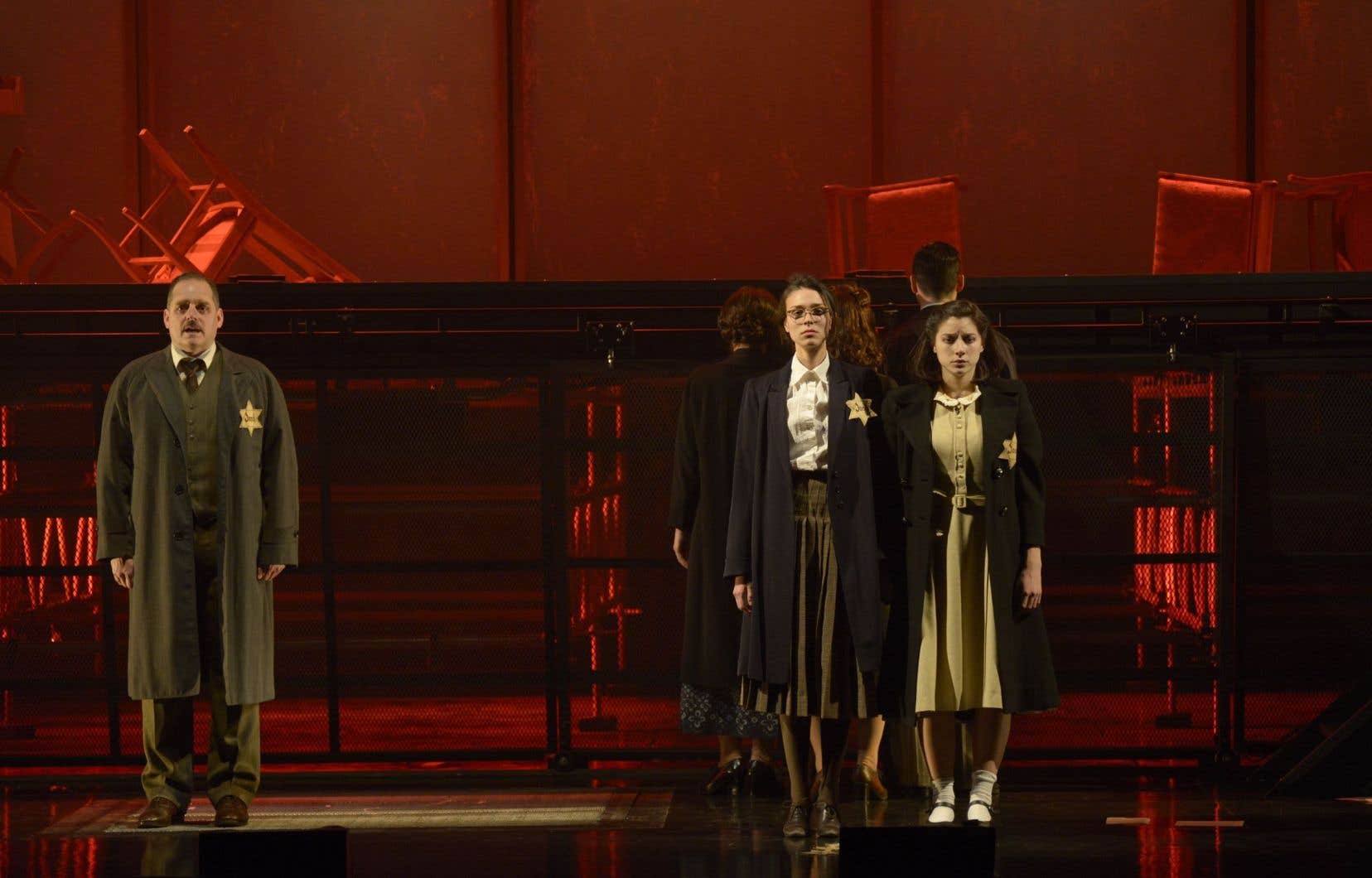The artistic direction of the Théâtre du Nouveau Monde (TNM) will soon be entrusted to a new person, succeeding the one that Lorraine Pintal has led with determination for more than three decades, oscillating between audacity and prudence. We owe it to the outgoing director to have enabled a first transformation of this century-old place, in 1997, which notably made possible the development of more assertive stage languages (decors, light, sound). At the end of a second renovation, still in progress, this 800-seat theater will have a second intimate stage, the Réjean-Ducharme room, when the company celebrates its 75th anniversary.
This context is conducive to reflection on the place of TNM in the theatrical landscape. In the public or among the media, many recognize it as an institution. However, nothing distinguishes it legally from other companies that produce in season: it is a non-profit organization for which a board of directors is ultimately responsible.
It is perhaps more in view of his career since a distant era no longer having much to do with the current one, but where everything had to be done with starving means and the nobility of the ambitions which presided over its foundation, in the Duplessist era, that we can feel this feeling of belonging of the TNM towards the community.
From its first season, before Radio-Canada television went on the air, the TNM announced its intention to perpetuate the company with a troupe and to create a theater school since none existed at the time (it held from 1952 to 1956); to provide the company with a location, to promote access to its activities for as many people as possible and to allow the emergence of a Canadian theater, as the Quebec reality was then designated. Tours at home as well as abroad were desired, although considered improbable given the obligation for performers to earn their living on radio and then on television.
From the very beginning, the TNM translated its intentions and its positions through texts that were found within the programs given to the public, then through the publication Behind the scenes. Theater people held an important place on the board of directors from the first years.
From 1951 to 1992, artistic directors were held for a period of 10 to 16 years, then for three decades for the last one. It would be wise to mark from the outset the duration of the mandate of the next one, while leaving a reasonable time for his or her incumbent to accomplish the project that he or she will propose, in order to ensure greater generational fluidity in this function, to contribute to the updating, or even renewal, of the organization’s mission, and to make room for new sensibilities and diverse artistic families. This recommendation can be applied to other companies owning a venue in the delicate balancing act between retaining an audience and the danger of artistic numbness.
The new artistic direction of the TNM will be carried out in a Montreal environment where many places have gradually emerged, several of which give a large place to creation (Centre du Théâtre d’Aujourd’hui, La Licorne, Théâtre Prospero, Salle Fred- Barry, Aux Écuries) and where no one feels obliged, with some exceptions, to examine the Quebec repertoire. Would our dramaturgy be doomed to oblivion as soon as it was created? Isn’t the TNM a good place to take stock of the evolution or non-evolution within Quebec society of the issues at issue in certain pieces or to look at the writings which require a longer time of exploration, because less agreed?
The next artistic director will have to submit a project likely to be fully realized in the medium or long term, because it is unlikely that she or he will have, in the short term, the means to achieve their ambitions: the company owns a building with increasing costs linked to its operation and both the staff and the artistic teams expect exemplary compensation. Like other companies to which its operation resembles it, subsidies constitute less than a third of its revenues, which shows the importance of ticketing and sponsorships. The reduction in the budgets of the Conseil des arts et des lettres du Québec hardly allows us to hope for an increase in subsidies from it, while the TNM must now run two rooms. However, he or she will inherit a company whose finances are healthy.
The theatrical institution, that is to say all the elements which constitute the theatrical landscape, has allowed a diversification of practices and audiences. In this regard, the arrival in recent years of shows from private, for-profit producers whose artistic requirements are based on different purposes changes the situation and can blur the boundaries in co-production partnerships, especially if their productions are part of in the TNM regular season.
Shouldn’t the role of the latter be updated by the development of an informed and demanding public, offer, at affordable prices, programming giving access to works from the major repertoire without overly emphasizing their shortcomings or distorting their historical roots, but by relying on the intelligence of the public to make its content resonate in the present? Opening up to contemporary foreign dramaturgy, absent from our stages except for easily accessible productions? Even occasionally welcoming foreign productions by key figures in contemporary theater who contribute to the vitalization of art, especially since this path is no longer prioritized by the TransAmériques festival.
These are challenges, some of which apparently contradictory, which constitute so many avenues to potentially take for an update of the mission of the Théâtre du Nouveau Monde at the dawn of its 75e anniversary and its repositioning in the theatrical landscape.
